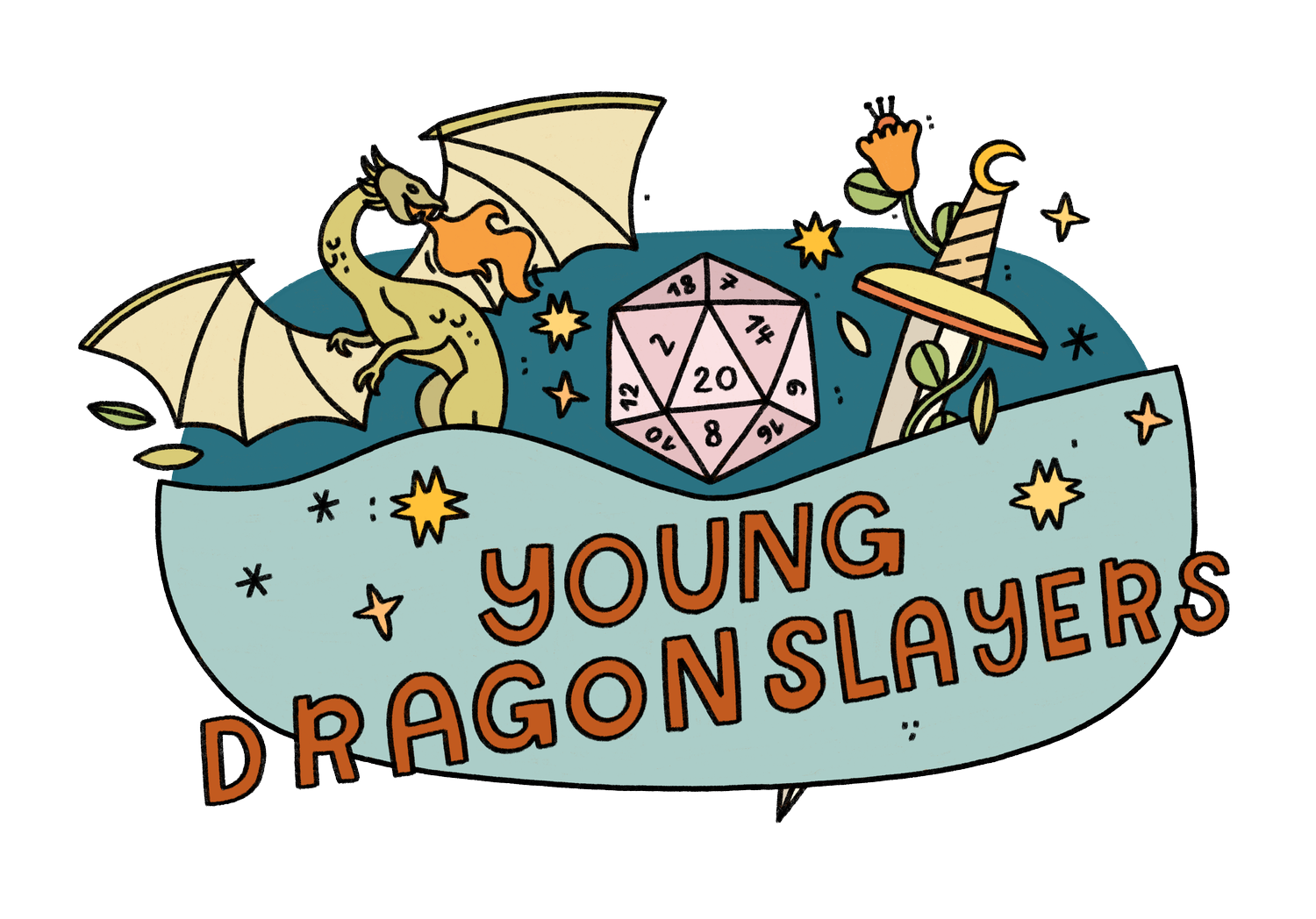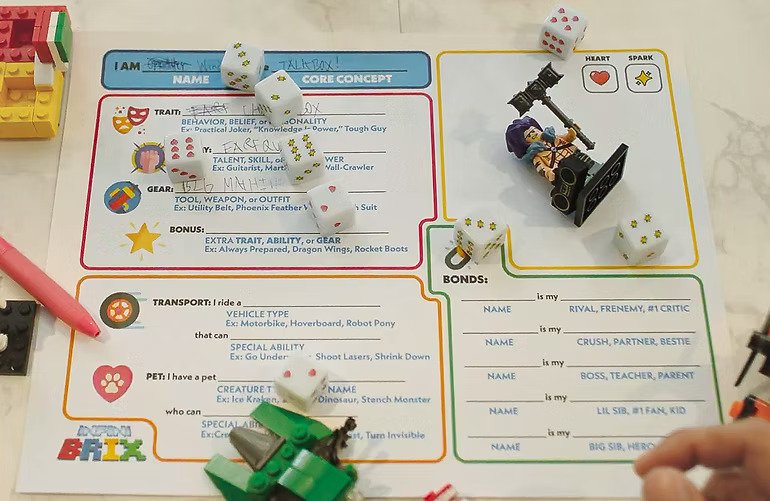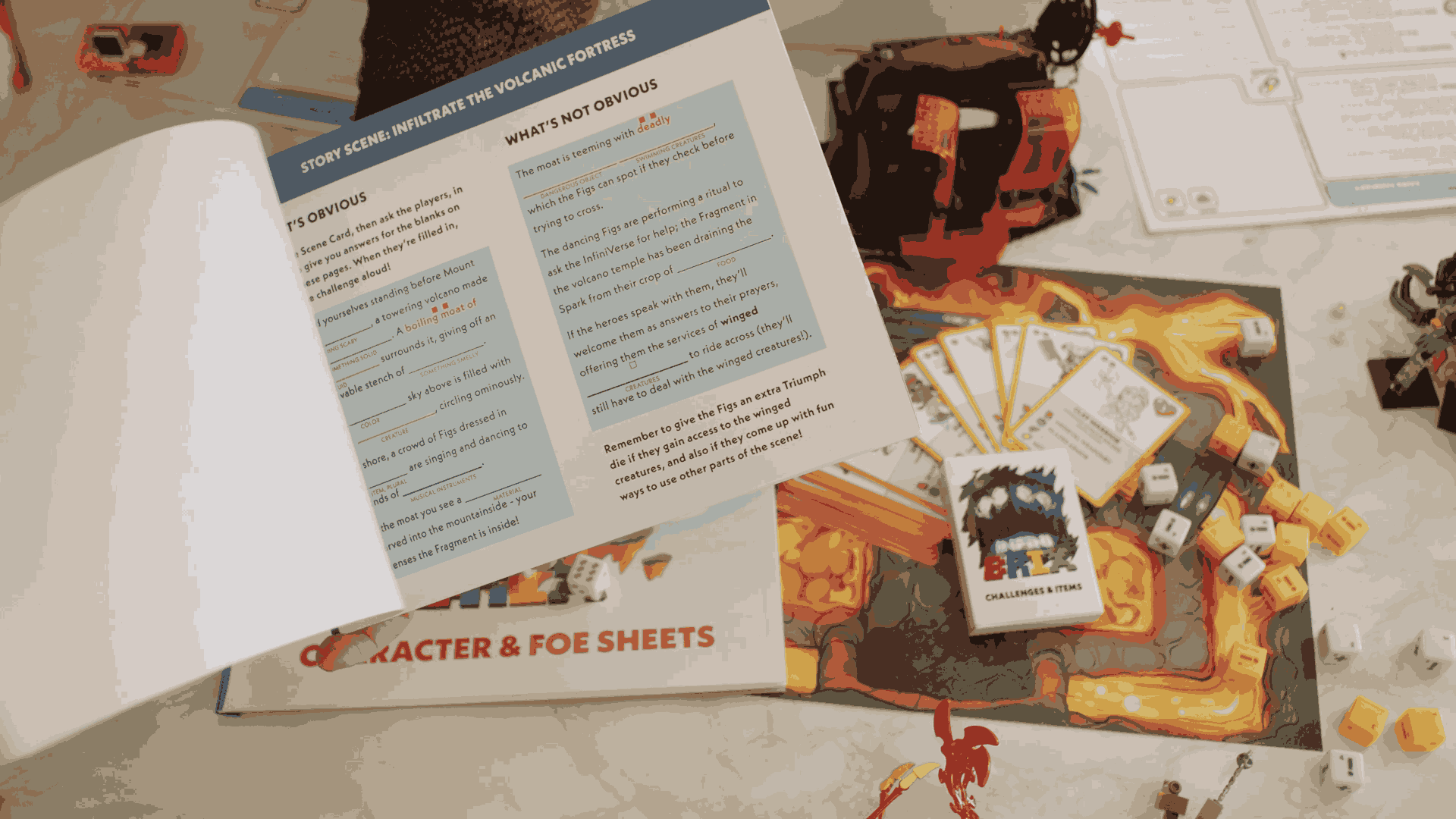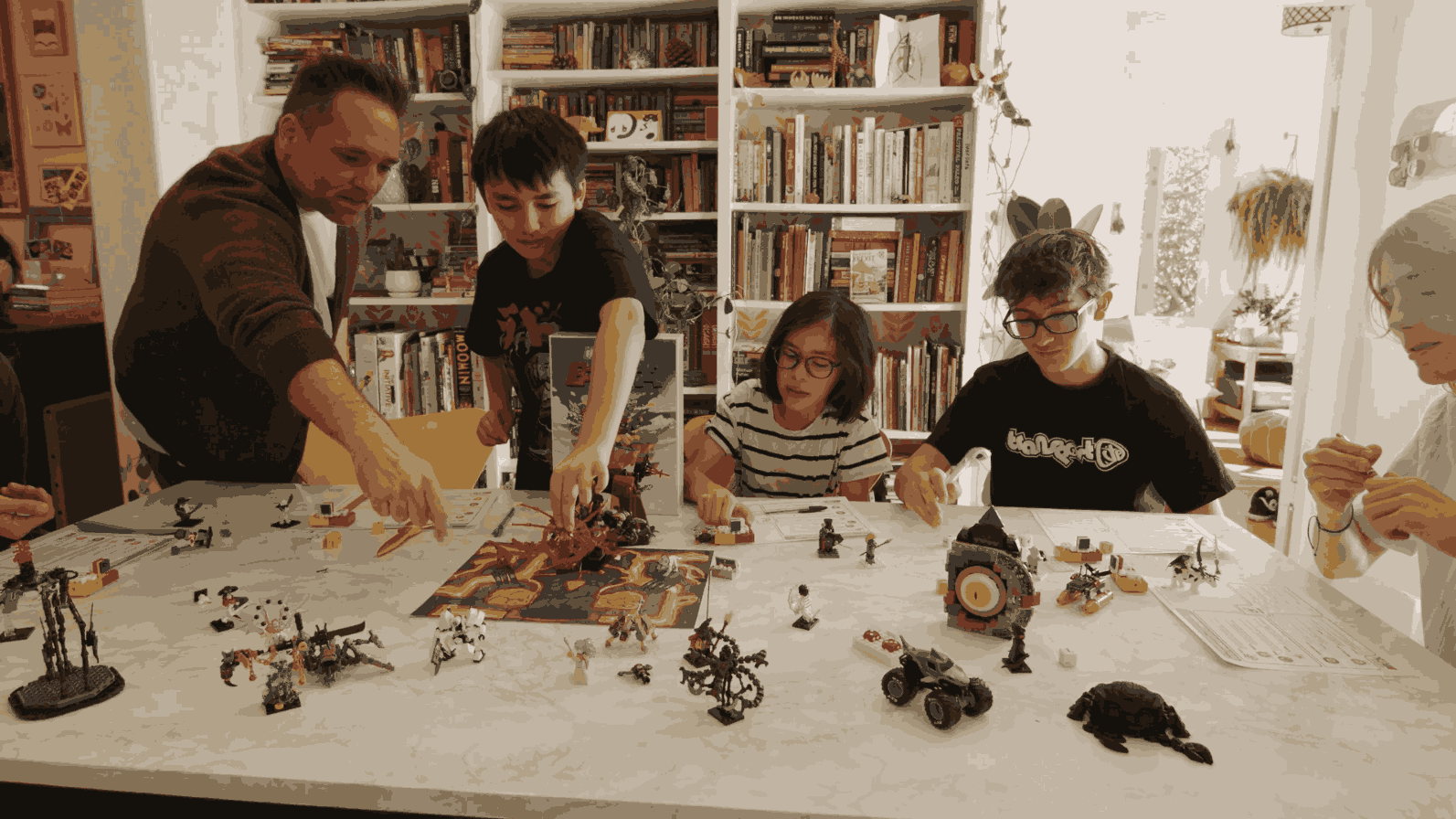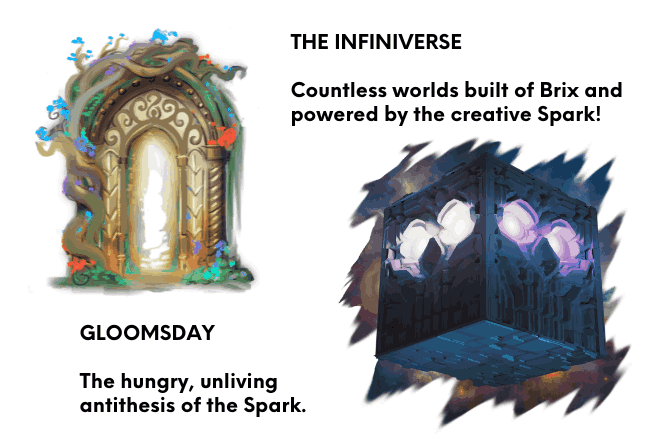Elevate Your D&D Game with Lego Creations
With the release of the Lego Dungeons & Dragons set (not to mention the huge crossover between Lego fans and D&D fans), a lot of people are wondering how they can use their Legos to play D&D. Are Legos good for D&D games? What can Legos be used for in D&D? What are the best Lego minifigures for D&D? How do you come up with ideas for a Lego D&D adventure? We’re Young Dragonslayers, an online D&D club for tweens and teens, and we’ve teamed up with Infinibrix, a D&D-style game that uses Lego pieces to create epic, zany adventures for any age, to tell you how you can best use Legos in your D&D games…and beyond!
PS—This is not a sponsored post! We won’t earn anything if you check out Infinibrix. We just really like Legos.
Make Your Character From D&D With Lego Minifigures
Making Lego minifigures is to toys what the character-creation screen is to video games. Using a basic palette, you can mash together different outfits, hairstyles, weapons, accessories, and wild bonus pieces to create a totally unique representation of your character. If you’ve already got an existing Dungeons & Dragons character, you can use Lego pieces to craft your own figure. Search through your collection to find pieces that you can mash together to create your character - or, better yet, let your imagination run wild as you sort through your bits and bricks to give you an idea for a totally new character!
In Dungeons & Dragons, an game like it, called tabletop roleplaying games (TTRPGs), the characters you play are often represented by small figures, which makes Lego minifigures perfect for placing on your Dungeon Master’s grid maps for combat, tucking behind cool terrain they built, or even just using them to show off your character in their party. In Infinibrix, a Lego-inspired TTRPG, there’s a whole mode of play for this, appropriately called Build Mode. In Build Mode, players mash up whatever pieces they’d like to create their character - and only THEN do they use their wild creation to fill out a character sheet! Talk about switching it up. While homebrewing is always an option in Dungeons & Dragons (check out our article about the pros and cons of homebrew), Infinibrix is already built to accommodate whatever ideas you have for your character. This means that totally wild ideas can just happen, like this awesome boombox barbarian.
Play A Dungeons & Dragons Lego Campaign
If we’re being honest, Legos and roleplaying games have the same energy. In both of them, you mash things up in never-before-seen ways to express your creative ideas. So Legos are a great way to come up with ideas for your D&D campaign or any other TTRPG adventure; just get out your bricks and start building! Do you have a Marvel superheroes set? Maybe you can run a superhero one-shot where Avengers tower is under attack! Have you created your own zany vehicles out of Lego? Maybe you can have a Mad-Max-style race where the players have to take down their opponents on the open road!
If you’re still looking for Lego D&D ideas, why not loot the minds of your players? In Story Mode of Infinibrix, you create stories together by coming up with elements to include in your adventure, a little like Mad Libs. In our adventure, the liquid “apple juice,” the object “katana,” and the swimming creature “kraken” mashed together to create the zany obstacle of an apple-juice moat filled with Katana Kraken! Especially if your Game Master hasn’t had time to prepare, this is a great alternative to preparation-heavy games like Dungeons & Dragons
Use Legos For D&D Combat
There’s plenty to track when playing combat in Dungeons & Dragons: hit point, spell slots, ki points, rage uses, conditions, and a ton more we’re probably forgetting about. Usually, these are all noted on a paper or digital character sheet, but why not use Legos to make things easier? Use studs to mark spell slots on a build plate, swap out minifig faces when a character is Frightened, or put a flame piece in their hands when they enter rage. Have fun with it; attacks, spells, familiars, zones, and more can be represented with Lego pieces, so rifle through your collection to craft the perfect piece for when you bust out a fireball or summon your unicorn familiar.
Perhaps our favorite use of Legos in D&D combat is creating totally unique monsters to fight. Sure, you could go with a premade figure of a dragon or a necromancer…but what about a lava dragon with a top hat and a laser sword? Or a necromancer in a mech suit made of skeletons? The modularity of Legos means that a new twist to your BBEG is only a click away, and you can always reskin existing D&D monsters to fit your newfound vision. The creators of Infinibrix wanted to keep the tactics and strategy of D&D, but they also wanted players to be able to go wild building, breaking, and remixing Lego creations and coming at challenges with more than just a prewritten list of abilities (or having to reskin every encounter). To do this, they put health in the form of studs right on the minifigs plates and measured everything in terms of studs: a 10-stud-radius circle or a movement of 20 studs, for example. They also made it so that you come up with your own attributes, items, and abilities for your character that can make rolls easier - but the bad guys have their own attributes that make those same rolls harder! We faced down a baddie with superpowered armor and molten blood, both of which made him hard to punch. After failing (way too many) rolls, we changed tactics and tried to sing him to sleep - armor can’t do anything against that!
Create Your Own Lego D&D Game
If you want to make your own awesome game using Legos as an inspiration, all you need are a pencil, paper, and an idea. In fact, we wrote an article with a guide you can use to make your game. If you’re an aspiring game designer (or you just like learning how things work), here’s how the designers at Infinibrix worked things out. The bread and butter of the game is in Tags. These are descriptors of what’s going on in the world. Is the moat Filled With Lava? That’s a tag. Is your character always equipped with a Utility Belt? That’s a tag. Or maybe you’re playing an Expert Martial Artist with Dragon Wings? You got it - tags. Every time your character tries to do something, instead of rolling one twenty-sided die and adding numbers, like in D&D, you make a big pile of dice, called a Dice Pool. Any tag that makes things harder makes you add a Trouble Dice to the pool (plus more depending on how tough the challenge is to begin with)! Any tag that helps you out (or help from your friends, a great plan, etc.) adds a Triumph Dice to the pool. Triumph dice also have a special bonus; there’s a 1 in 6 chance they’ll “explode” - that it, give you a Triumph and let you roll another Triumph dice (and if that Triumph dice rolls a 6, you roll another Triumph dice…).
Let’s say your character used their Dragon Wings and a grappling hook from their Utility Belt to fly across the moat. That’s two tags that can help, adding 2 Triumph Dice to the roll. The moat itself is a 1-die challenge, but it’s Filled With Lava, which adds another Trouble Die for a total of 2. So the Dice Pool has 2 Triumph Dice and 2 Trouble Dice, which means you’ll need a little bit of luck to get the Triumphs you need. Say luck is in your favor, your dice explode, and you end up with 3 Triumph and 1 Trouble - so you zip across the moat AND you flap your mighty Dragon Wings to cool the lava for your friends, changing the Filled With Lava Tag to Filled With Rock.
Lore Ideas for A Lego D&D Adventure
Any tabletop game needs lore, and your Lego adventure is no different! But instead of looking to the pages of your favorite fantasy tome, why not be inspired by the Legos themselves? The creators of Infinibrix came up with their own universe where the logic of Lego shapes reality. In the Infiniverse, the Spark is what builds new creations out of Brix, and the players are Figments (or “Figs” - get it?) who can wield the power of the Spark. Figs can travel to all different kinds of worlds, but they don’t just do this for fun. They are heroes fighting back against the Gloomsday, a gray antithesis of the Spark trying to zap the color and life out of unsuspecting Realms by breaking itself into Fragments. These Fragments get sent to other worlds and spawn Fraglings, the servants of the evil Gloomsday trying to destroy the Realms. Each time the Figs save a Realm from the Gloomsday, a door spawns that Realm in the Green, a hub world for the Inspired Figs who can hop from universe to universe.
Use Legos To Play D&D Yourself!
If reading this post made you want to build your own Lego character, roll some dice, and play an adventure, you’re in the right place. At Young Dragonslayers, we host weekly games of Dungeons & Dragons for geek-minded tweens and teens. Our professional Dungeon Masters will build a custom adventure using your interests as inspiration - whether it be Legos, Minecraft, or something else entirely - and we put together groups of players with similar interests and play styles (so you’ll have friends to share your awesome builds with)! If you’d like to create your own Lego-inspired tabletop adventures, you can check out Infinibrix to learn more about this story-telling, toy-bashing, laugh-out-loud game.
